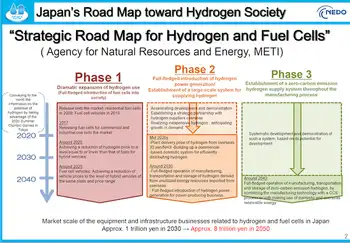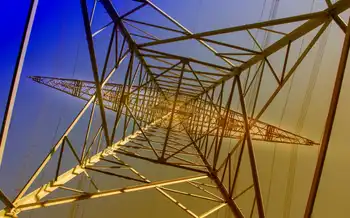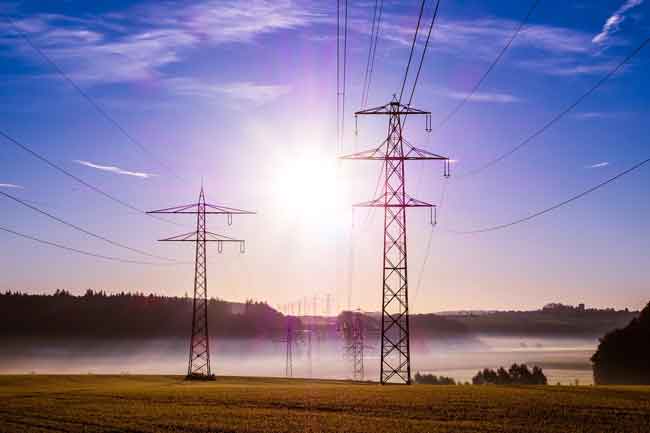Proposal could calm storm over wind farm
By Boston Globe
Arc Flash Training CSA Z462 - Electrical Safety Essentials
Our customized live online or in‑person group training can be delivered to your staff at your location.

- Live Online
- 6 hours Instructor-led
- Group Training Available
Blue H, a subsidiary of a Dutch company, announced that it wants to build 120 floating wind turbines in deep water 23 miles off Martha's Vineyard and sought government approval to install a test turbine. Company officials then joined with the main opposition group fighting Cape Wind's proposed wind farm off Cape Cod in touting Blue H as a viable alternative that would be far from ferry lanes and invisible from shore.
"If you had a horse and buggy and then the automobile was invented, it makes sense to embrace the technology moving forward," said Blue H spokesman Martin T. Reilly.
There's only one problem: No one knows whether a floating wind farm will work.
Modeled after deep-sea oil rigs, the float technology has never been applied to wind turbines in the deep ocean. In December, Blue H launched the world's first floating turbine, an 80-kilowatt demonstration project off the coast of southern Italy. Soon, the turbine will be moved about 10 miles offshore to water more than 350 feet deep. Blue H plans to launch the world's first commercially operatingfloating turbine off Puglia by the fall.
Yet wind specialists say that it is unlikely that a commercial-scale floating wind farm will be operating anytime soon.
"I don't think they can get a large-scale operation going in two to three years, but the first step is to get a single experimental turbine up," said Walt Musial, principal engineer for ocean renewable energy at Colorado's National Renewable Energy Laboratory.
The idea for a floating wind farm off the Vineyard, in water 167 feet deep, would need to overcome numerous technical obstacles, such as determining how big the floating platforms' submerged structure should be to support a turbine, how ocean currents will affect the dynamics of the structure, and even how the transmission cable will operate, Musial said.
Cape Wind president Jim Gordon said he does not worry that new technology will outpace his project and render his seven-year investment in Nantucket Sound moot. "There will be a whole range of issues that they'll need to confront," he said.
"I think we need all the renewable energy we can get," Gordon added. "Certainly, if they can get through the development process, then we welcome them and wish them well."
Commercial wind turbines for offshore projects like Cape Wind's employ technology now in use in Europe. In deep water, however, it is prohibitively expensive to affix wind turbines to the sea floor. The world's deepest offshore wind turbines today are in about 147 feet of water off Aberdeen, Scotland. Blue H officials say their technology can work in waters as deep as 1,000 feet.
Blue H's technology, which the company says is patented, places each turbine on a hollow, steel platform that bloats and is tethered to an anchor on the seabed with chains. The chains are taut, keeping the structure stable.
In the proposed project off Martha's Vineyard, the turbines would rise about 328 feet above the water's surface and generate 420 megawatts. That's about the same size as Cape Wind's project, which Cape Wind says could, in average winds, provide three-quarters of the electric needs of the Cape and Islands.
The turbines, which could be louder than those closer to shore because there would be nobody to complain, will be assembled on land and towed out to sea to save costs, said Raymond Dackerman, general manager of Blue H USA. A roughly 45-mile long transmission cable would connect to the electricity grid in New Bedford.
"This is an adaptation of proven technology successfully deployed in the oil and gas industry in the North Sea and Gulf of Mexico," said Dackerman. He said the company has been developing the float technology for a decade and is also considering other Northeast locations he declined to name.
Blue H - headed by three men with combined backgrounds in business, renewable energy and engineering - filed an application to lease a piece of the sea floor from the Minerals Management Service. In 2005, Congress directed the agency, which also oversees offshore oil drilling, to develop policies for locating alternative energy projects off the nation's coastlines and evaluate their environmental impact. Blue H is one of 43 projects currently proposed to the service to test the viability of offshore renewable energy.
Blue H would need to apply again to build a wind farm under the new rules that the service is expected to finalize by the end of the year.
Cape Wind has received a favorable draft environmental review from the service and hopes to secure final federal environmental approval by early next year.
Because of the uncertainties surrounding floating wind turbines, experts and wind energy advocates are viewing the proposal as a hopeful but faraway option.
"I wouldn't see them as a competitor [to Cape Wind]at the moment," said James F. Manwell, director of the Renewable Energy Research Laboratory at the University of Massachusetts at Amherst.
Manwell is working with a group developing European standards for wind turbines mounted on the ocean floor.
"Nobody's even begun to think about floating," he said. "You're going to have to go through testing, verification. It's going to take years."
That didn't stop Blue H from promoting it during a Minerals Management Service hearing on Cape Wind in Boston Thursday night. "For the first time, alternative deep-water technology now exists," Blue H's Reilly said.
"The question now comes on what is the most appropriate place to allow wind power to go forward," Reilly told the crowd of about 450. "And clearly the answer is deep water."
Participants who oppose the Cape Wind proposal applauded heartily, and some of the speakers began citing Blue H as evidence that there are better alternatives than spoiling the Sound.
"We've always been supporting deep water," Audra Parker, spokeswoman for the Alliance to Protect Nantucket Sound, said in an interview. "It's potentially a promising alternative to Cape Wind."











